By: Lidija Grozdanic | July - 26 - 2011
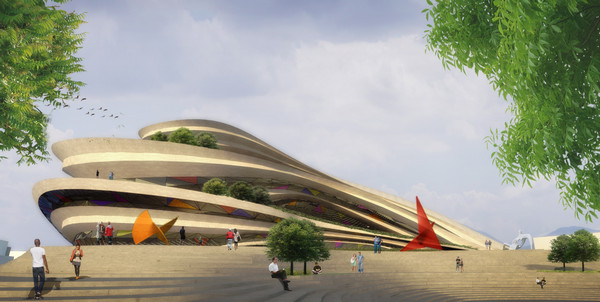
The aim of the CCP Architectural Design Competition for the Artist’s Center and Performing Arts Theater in Philippines was to create a new theater building next to the existing one, within the Arts Sanctuary Cluster of the 62 hectare property. Buensalido Architects, an architectural practice based in Manila’s Makati City, proposed a design which tries to represent the cultural diversity and interweaving of different artistic attitudes . By comparing the cultural blend to the interlaced threads of tapestries, the design concept evolves, establishing two structures as architectural threads originating from various locations within the cultural complex. The structures are then connected with imaginary splines that wrap around the given sites. The curvilinear threads blend, creating strong volumes that culminate in an upward sweep towards the sea at the New Performing Arts Theater site.
Unlike the old performing arts building, dominated by vehicular access routes, the new structure emphasizes the pedestrian qualities of the site. With ramps, bridges and steps, the open public space surrounding the building is transformed into several smaller plazas, suitable for outdoor activities, art installations and performances.
The Artist’s Center is divided into four wings: Music, Dramatic Arts, Dance, Arts Education, which morph into a “heart-shaped” composition. The clad material would be CCP Travertine, the same stone as the existing performing arts theater. Concrete and grey granite stone are used for the podium and plazas, similar to the base of the existing structures.
In terms of sustainability, the design addresses several crucial issues: the use of Atria within the two buildings enhances the natural cooling of the Theater and supports the cross-ventilation. Natural light penetrates the interior through horizontal slits, reducing the need for artificial lighting. To prevent the penetration of heat, walls are angled inwards and pleated so that the surfaces facing the sun are solid, blocking the heat. The downward facing surfaces which do not receive direct heat are in clear glass panels that allow panoramic views of the city skyline and the sea to be enjoyed from inside. Rainwater is harvested via “rain funnels” that double as atria and light wells. The collected water can be used to supply “mist systems” to cool the temperature in outdoor spaces.
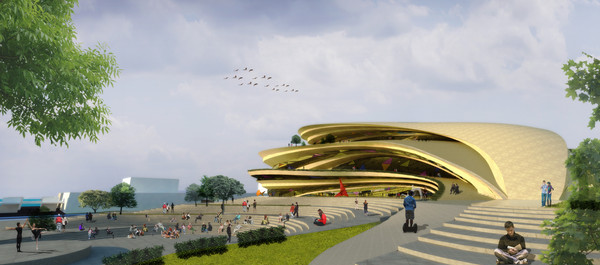


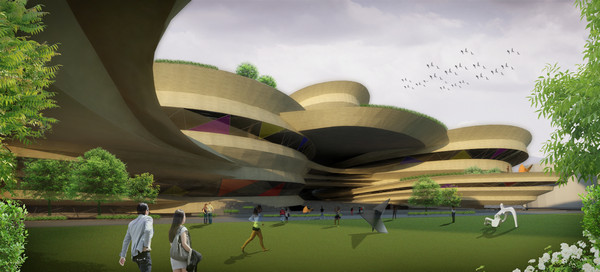
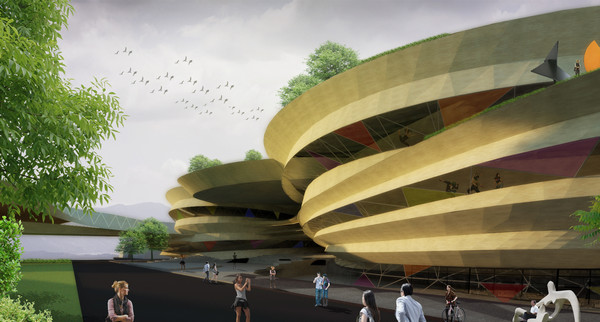
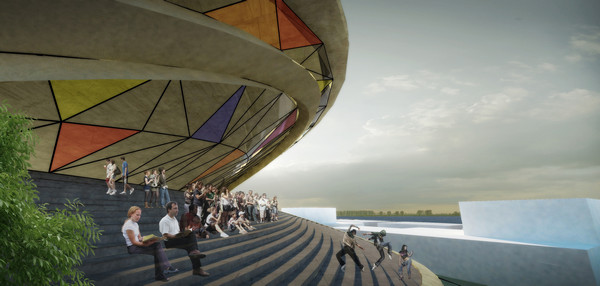
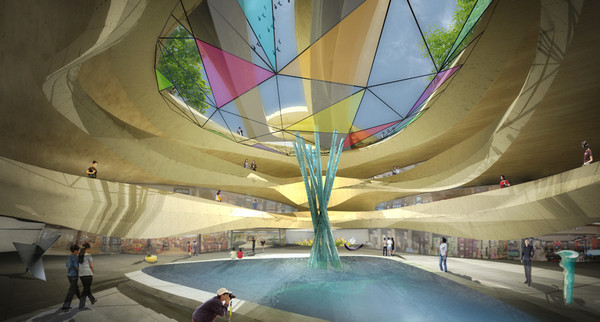

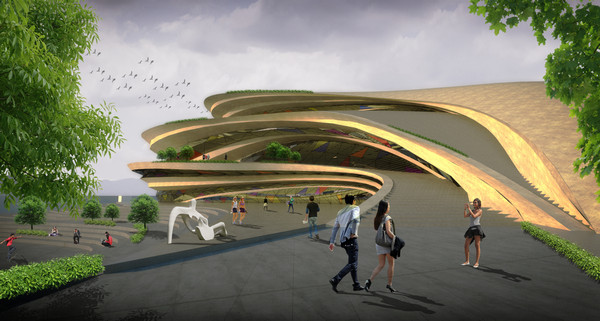
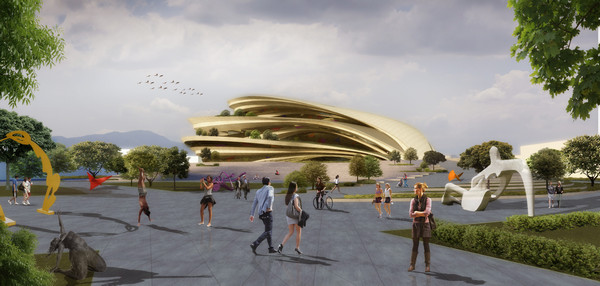
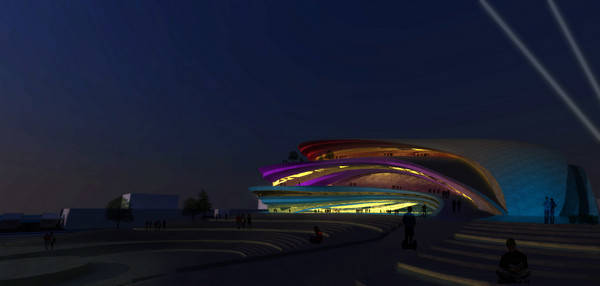

No comments:
Post a Comment